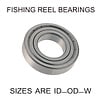Flashback… In the 1950s and 60s a snapper would swim past your cotton hand-line and rusty hook. Impaled on that hook might have been kerosene-soaked liver. Your chilly bin was a hessian sack and your trouser pochttp://gofish.co.nz/worldpress/?attachment_id=2022ket was your tackle box.
Fast forward… Today, you could fish with your 99% quatre-axial carbon rod, with titanium-framed guides with silicone carbide inserts – not to mention the spiderweb-thin line that you can’t break bare-handed, for fear of cutting yourself to the bone. Your fishing reel is likely waterproof with digitally-cut gears and more bearings than two roller-skates. But do the fish really care?
A lot of fishing is seen today as a more technical sport and relaxing hobby. Back in the day more of us were hunter-gatherers. With new methods and lures, brought about by the development of braided super lines, comes a need for rods and reels that work the lures effectively.
Lure fishing requires us to cast, drop and jiggle lures such as inchikus, butterfly jigs, soft-baits, stick-baits and poppers. Rod and reel choice makes a big difference to your increased success with these new methods. For example, if you use a rod that’s too stiff for inchikus your hookup rate goes down when the fish are shy or finicky. If your popper rod is too soft your popper won’t bloop, the kingfish will get bored and he’ll go elsewhere.
Ultimately, fish don’t care what you use. When the fishing is hot, kerosene-soaked liver will do the job. But the challenge of sussing out a new methods and becoming proficient at them in all bite conditions is very satisfying, and that’s where it becomes a sport. Now your 21st century fast taper carbon rod and mighty reel will show its true value.


 Fishing reel bearings
Fishing reel bearings
 Fishing line - Braid
Fishing line - Braid
 Fishing tackle
Fishing tackle
 Rods & reels
Rods & reels
 Hot deals
Hot deals
 Blog
Blog









